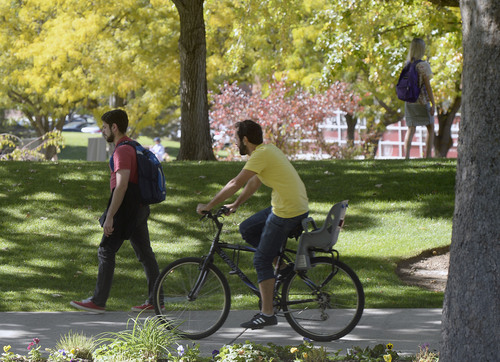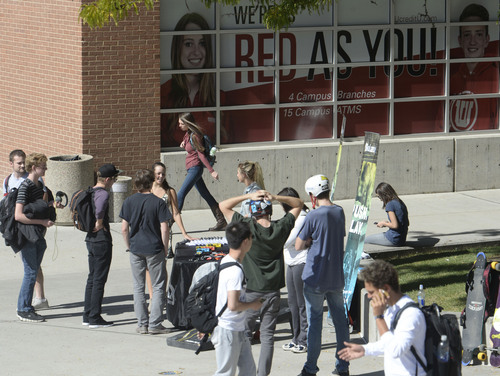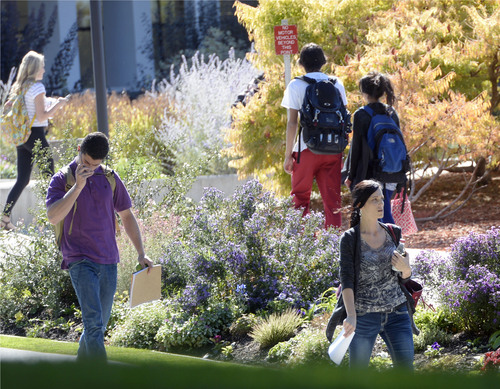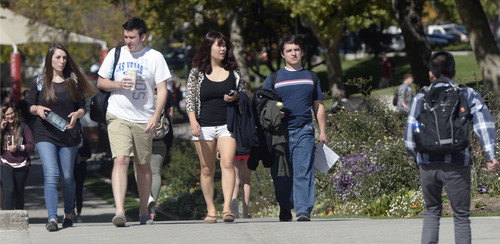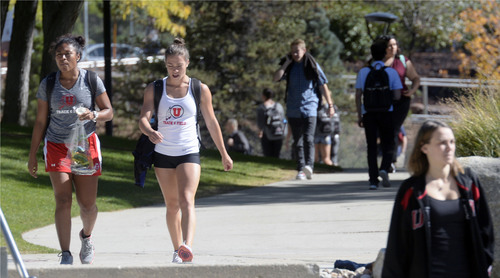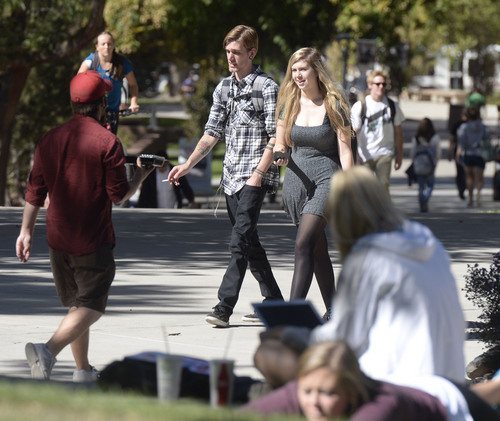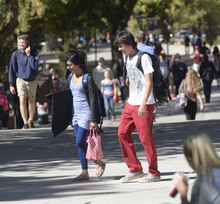This is an archived article that was published on sltrib.com in 2014, and information in the article may be outdated. It is provided only for personal research purposes and may not be reprinted.
The number of students on Utah college campuses hasn't changed much since last fall, but more of those students are Latino.
Utah's system of public colleges and universities released preliminary numbers for fall enrollment Wednesday. While the system's total number of students has risen by just a tenth of a percent, the number of Latinos has climbed 6.5 percent.
"That's great news," said David Buhler, state higher education commissioner. "I'm happy for the progress."
The statewide increase in full-time students of 0.12 percent is still notable, Buhler said, because it comes after a series of dips in enrollment. "Steady is good," he said.
Utah's colleges and universities also reported a nearly 11 percent jump in the number of students who self-identify with "multiple" ethnicities, and a 4 percent increase in Asian students. On the other end, the number of American Indian and Alaskan students dropped by 7.6 percent. State researchers have not yet calculated these changes for each school.
At high schools around the state, recruiters are working to draw Latino students into higher education, and it's working, said Katty Perez, an academic adviser and Latino specialist at Utah Valley University.
She says students have one main concern: "How am I going to pay for college? I don't have the money."
Perez counsels them to apply for federal Pell grants, scholarships and financial aid.
"Sometimes people think going to college is so far away and so difficult. We are trying really hard to show that it's not difficult," she said.
In recent years, Utah colleges have been coping with enrollment drops after The Church of Jesus Christ of Latter-day Saints lowered the minimum age for missionaries from 19 to 18 years old for men and from 21 to 19 years old for women.
The first wave of men who joined the church's worldwide proselytizing force after the historic announcement two years ago won't return until next semester, but their female counterparts are already back on campus.
It will take more time to determine the evolving impact on enrollment, officials said.
"We haven't dug into the numbers deeply enough to see if we're seeing a direct missionary effect," said Weber State University Provost Michael Vaughan.
Even so, he added, returning missionaries are likely one reason why Weber State University is seeing a nearly 4 percent boost in total students and a similar bump in the number of women on campus.
But it's not the only explanation. Some men who may otherwise have signed up for classes instead went straight to work, Vaughan said, pointing to the growing economy.
With only full-time students tallied, Weber State's numbers drop into negative territory, following the recent statewide trend at larger universities.
Utah State University, Snow College, UVU and Dixie State University counted enrollment bumps from about 2 to 4 percent.
Salt Lake Community College reported the biggest dip: just over 5 percent.
Community college leaders say one explanation could be that more people have started jobs and have bypassed community college as the economy improves.
@anniebknox —
Changes in estimated full-time students
Preliminary enrollment figures show increases at some Utah colleges and universities and decreases at others.
University of Utah: -.93 percent
Utah State University: 2.9 percent
Weber State University: -1.2 percent
Southern Utah University: -.9 percent
Snow College: 3.4 percent
Dixie State University: 1.9 percent
Utah Valley University: 3.4 percent
Salt Lake Community College: -5.3 percent
Total growth, Utah System of Higher Education: .12 percent


